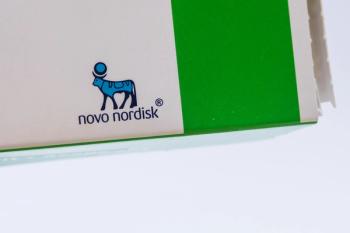
PharmaSafe: Dispensing protection for pharmacies
Pharmacies are the new convenience stores when it comes to pharmacy robbery. Hawaii pharmacist and inventor Patrick Adams has responded to the increase in pharmacy crimes with PharmaSafe, a dispensing cabinet built into a timer safe.
Key Points
Worried about pharmacy robbery? You should be, according to Hawaii pharmacist and inventor Patrick Adams. In 2008, a single drug chain, Walgreens, was hit with 45 robberies in Washington State alone. Nationwide, more than 5,000 pharmacy robberies were reported in 2009, Adams said.
"Pharmacies are the new convenience store as far as robberies are concerned," Adams told Drug Topics. "I remember the days when these stores were being robbed daily and now they're pretty safe places. Sure, 7-11 uses video, but the big change was the adoption of the cash drop safe. When robbers realized that cash just isn't available to clerks, they started looking for other victims. Since the attraction in pharmacy is narcotics like [oxycodone; OxyContin, Purdue], what we need is a safe for controlled substances."
PharmaSafe is essentially an Innovation dispensing cabinet built into a 500-pound AMSEC safe, Adams said. Each unit has up to 50 dispensers holding up to 800 cc of any solid dosing formulation. Back stock, patches, and liquids can be stored in locked shelves inside the safe. Dispensing and inventory functions interface with most existing pharmacy software, including Pharmaserve, QS/1, PDX, Condor, and Cardinal Inventory Management.
The pharmacist and technician process the script as usual and PharmaSafe automatically dispenses the proper quantity. The entire process, including the script and all back stock, is safely locked away for a predetermined interval, typically 15 minutes.
Every PharmaSafe includes stickers warning that all narcotic scripts are subject to a security delay and that the pharmacist does not have access to medications during the delay period.
Once the safety interval is up, the pharmacist can use a password, Dallas key, or electronic fingerprint to obtain the single Rx that has been dispensed.
"Speed is the only way to make pharmacy robbery work, which is why robbers prefer stores with the prescription counter near a door for a quick exit," Adams said. "They don't want to shoot anybody, they just want your product."
Pharmacy robbers visit stores several times to observe procedures and staff before deciding when to attack, he said. Surveillance video is a minor threat. Most pharmacies have too few cameras to provide effective coverage, as well as poor angles of view and low resolution that cannot provide positive identification. Not surprisingly, only about 30 percent of pharmacy robbers are ever caught.
The statistics are equally bad when it comes to employee theft, Adams said.
PharmaSafe requires positive individual identification every time the unit is opened and counts individual tablets or capsules that come in and go out of stock.
Each unit also maintains a perpetual inventory that meets the Drug Enforcement Administration's record-keeping requirements for controlled substances.
In 2009, the agency slapped Rite Aid with $5 million in civil penalties for sloppy record-keeping, poor inventory practices, failing to report loss or theft of controlled substances, and inappropriate filling of prescriptions for controlled substances.
"We're selling security, but we really have security, dispensing automation, and record-keeping in one package," Adams said. "The obvious use is for narcotics, but you can load and track any drug that has legs and tends to walk away, whether it's OxyContin or [sildenafil; Viagra, Pfizer]."
Newsletter
Pharmacy practice is always changing. Stay ahead of the curve with the Drug Topics newsletter and get the latest drug information, industry trends, and patient care tips.












































































































































